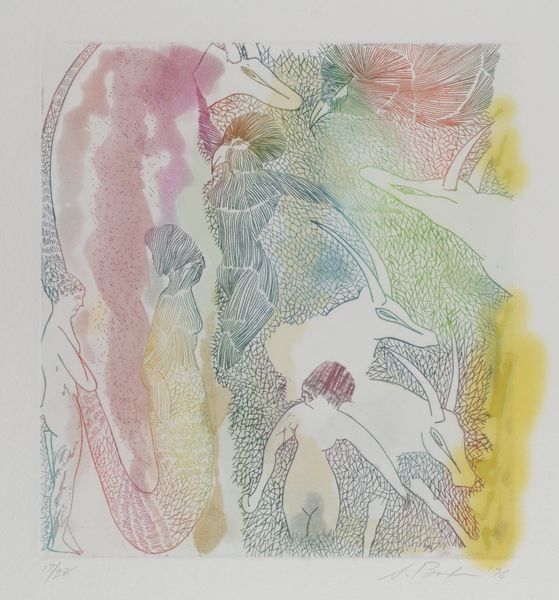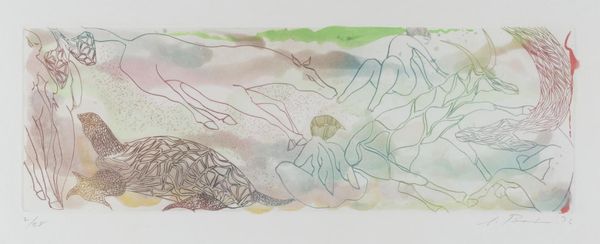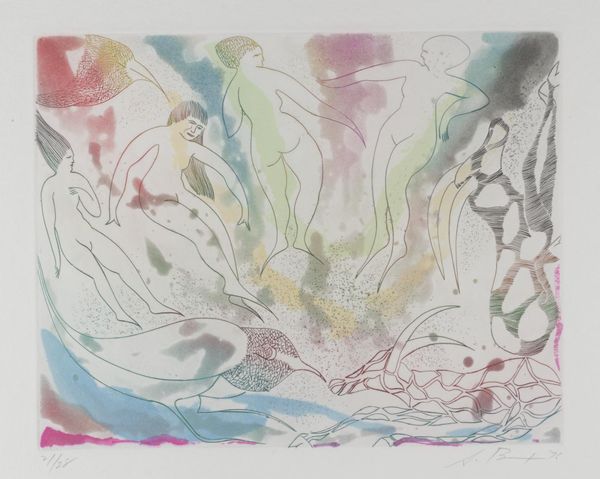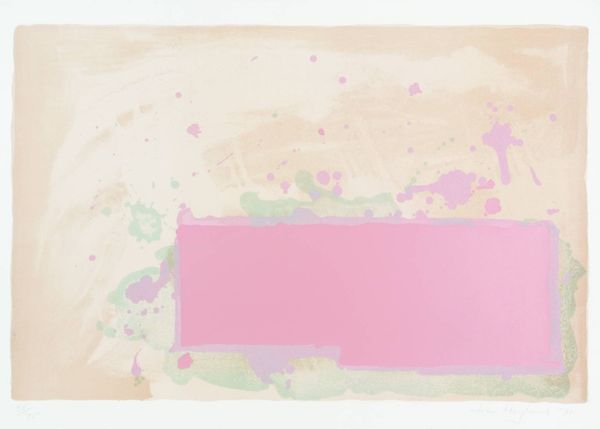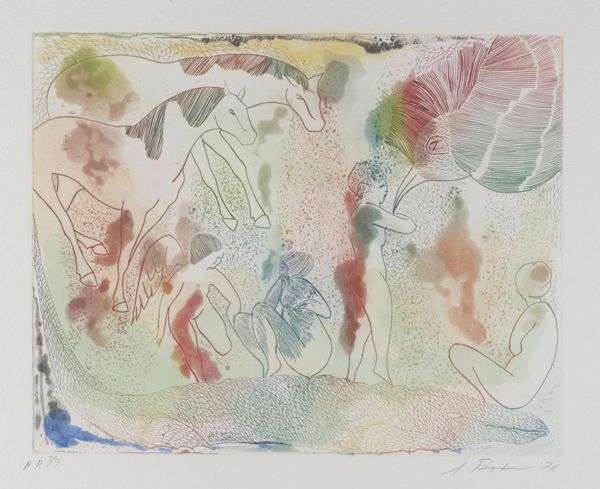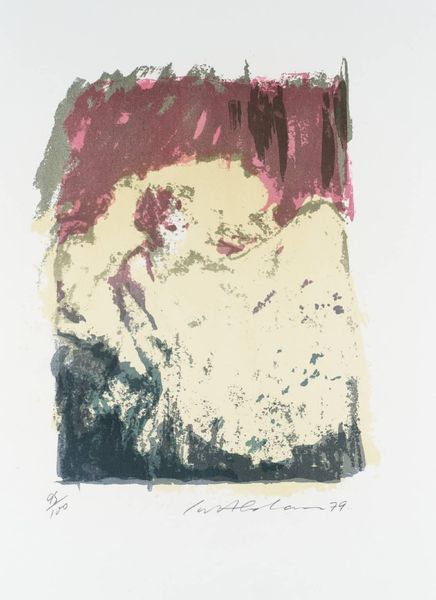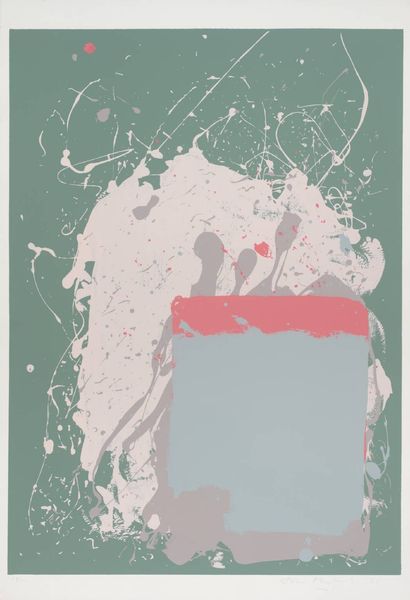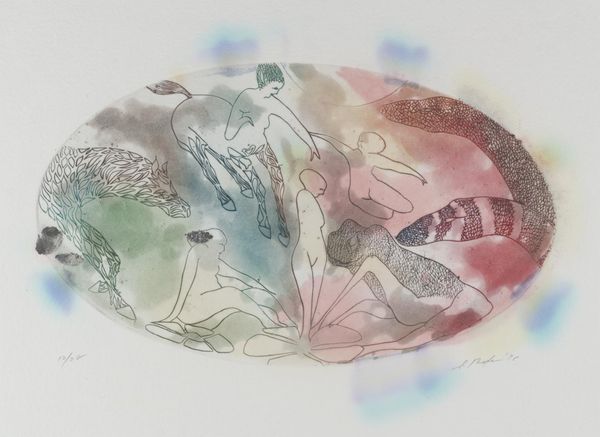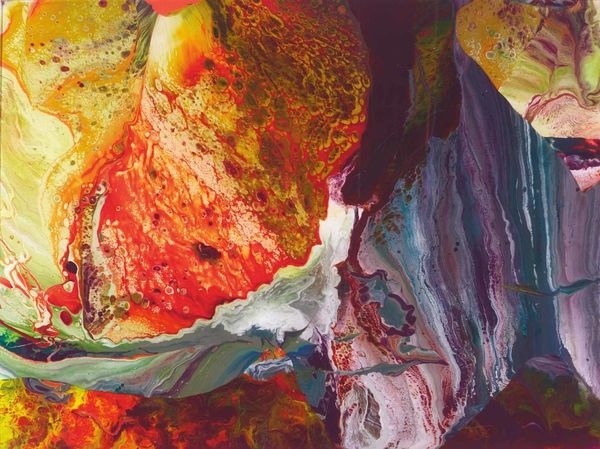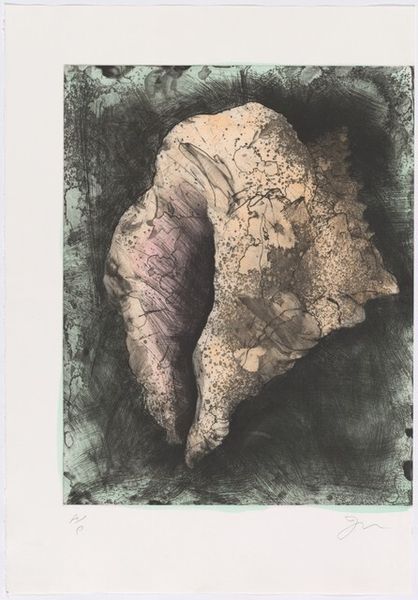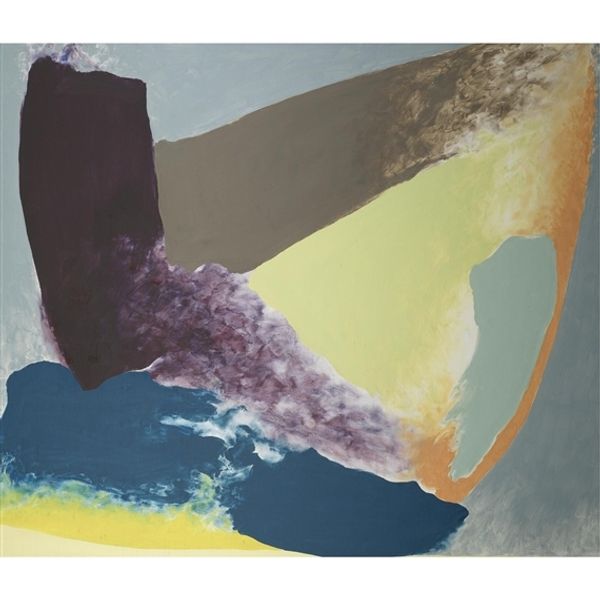
Dimensions: image: 276 x 447 mm
Copyright: © The estate of Stanley Boxer | CC-BY-NC-ND 4.0 DEED, Photo: Tate
Editor: Stanley Boxer's "Amissinamist" features this ethereal gathering of figures within a triangle. The pastel colors and floating forms give it a dreamlike quality. What cultural echoes do you hear in this work? Curator: The triangular composition and the assembly of figures recall Renaissance depictions of the Holy Trinity or gatherings of saints. Do you see how the figures overlap and intermingle? Editor: Yes, they seem to be emerging from or dissolving into the environment. Curator: It’s as if Boxer is exploring a collective unconscious, where individual identities blur, and archetypes merge. Think about Jungian psychology and the symbolic weight of the anima and animus. Editor: That connection to the collective unconscious really adds another layer to the dreamlike quality. Curator: Indeed. Boxer invites us to consider the enduring power of symbols and how they shape our understanding of ourselves and the world. Editor: I'll never look at a triangle the same way again!
Comments
Join the conversation
Join millions of artists and users on Artera today and experience the ultimate creative platform.
tate 6 months ago
⋮
Stanley Boxer is best known for his large scale abstract paintings which have a rich sculptural quality produced by thick, impasto brushwork. Boxer’s paintings were championed by American modernist critic Clement Greenberg (1906-1994), famous for his insistence that painters should eliminate subject matter in their work, aiming instead for the purity of abstraction. When considered in relation to his paintings, the prints Boxer produced at Tyler Graphics between 1975 and 1979 seem somewhat of an anomaly. Over this period, he created several series of figurative works, illustrating whimsical scenes featuring animals and winged figures. Boxer had, however, been making drawings of this nature throughout his career, and he insisted they were closely connected to his abstracts, made with similar gestures and motivation.
